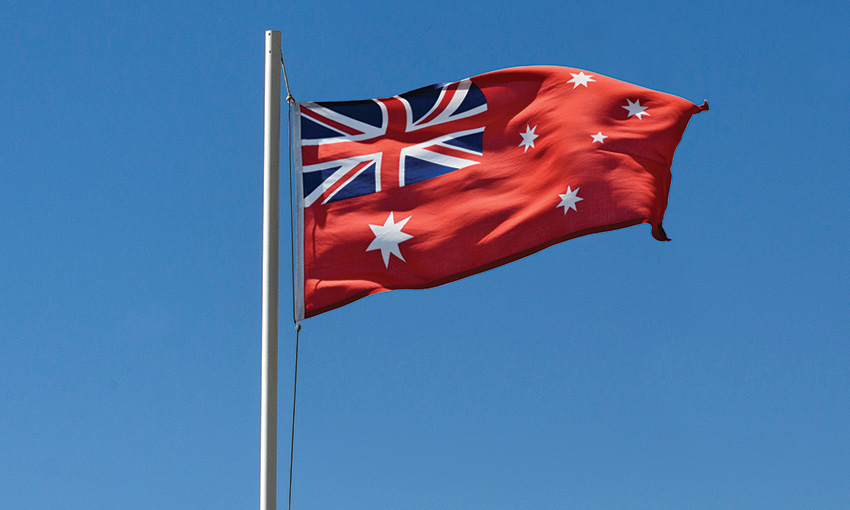WITH Labor seemingly heading for a comfortable win at next month’s federal election according to the opinion polls, so is the party’s intention of establishing an Australian-flagged “strategic fleet”.
The polls get it wrong sometimes, as they did in 2019, and the maritime industry’s mixed views ranging from support for the policy to outright opposition may impede its introduction. In the lead-up to the May election, however, the momentum favours Labor, along with its desire to add “up to a dozen” vessels to Australia’s maritime trading fleet.
Labor’s shadow infrastructure and transport spokesperson Catherine King summed up the policy framework, saying, Labor “… will enhance Australia’s economic sovereignty and national security by creating a Maritime Strategic Fleet to secure our access to fuel supplies and other critical resources, especially in times of global instability. To guide our policy, an Albanese Labor government will as a first step appoint a taskforce to provide advice on the establishment of the fleet as quickly as possible.
“This fleet is likely to include up to a dozen vessels including tankers, cargo, container and roll-on-roll-off vessels. Each of them will be Australian flagged and crewed.
“We anticipate that the vessels will be privately owned and operate on a commercial basis but be available for requisition in times of national need … a natural disaster or conflict. We look forward to working with groups across the sector to rebuild this vital sector.”
Labor will meet resistance from even supporters of the strategic fleet over the crew makeup. The maritime industry is expected to push for Australian officers but for the owner to have the option of using lower-paid non-nationals for the crew. This will be a matter no doubt for the taskforce.
But on the other known aspects of the policy, a gulf opens between supporters and opponents in the industry.
Supporters say the government would pay the ship owners a retainer, or stipend, to secure those particular vessels it may need in troubled times. Opponents say this would only lead to rent-seeking behaviour – such as pressure to provide ongoing financial support or protection from competition – and point to the old Australian National Line which needed repeated financial bail outs before being sold to France’s CMA CGM in 1998. Former Labor Transport Minister Laurie Brereton famously opined about ANL before the sale that “… you couldn’t give it away”.
The policy’s shipping industry supporters say creation of a strategic fleet can and needs to be done. “Australia can do it,” Teresa Lloyd, CEO of Maritime Industry Australia said.
“Other countries have done it, the US for instance. All we need is a level playing field with other nations’ fleets in having the right corporate tax structure and seafarer tax treatment to be competitive. We have shippers who are interested in contributing to a strategic fleet,” Ms Lloyd said. Shipping companies and seafarers sailing under many countries’ flags pay no tax.
Opponents are not so sure. In its submission to the Productivity Commission’s ongoing inquiry into Australia’s Maritime Logistics System, Shipping Australia poses this question: “Will importers and exporters feel comfortable putting their cargo on ships that are crewed by Australian union-affiliated crew? The three main Australian maritime unions have all demonstrated willingness to engage in disruption to achieve their aims”.
Futher, SAL states in its submission, “In the event of armed conflict, ships in a national Australian fleet flying the Australian flag have pre-identified themselves as potentially high-value – and vulnerable – targets to any hypothetical enemy.
“If there are national security issues, national authorities can always buy or charter ships and hire crew from the open market to help with their naval and military logistics. It was actually the international charter markets that provided the solution to the US military logistics needs in the early 1990s Gulf War. The U.S. authorities were able to charter about 177 ships flying a variety of foreign flags.”
Then there was the costly (to governments and taxpayers) ANL experience, and the failure of former Labor infrastructure and transport minister Anthony Albanese’s 2012 Coastal Trading (Revitalising Australian Shipping) Act and its three-tiered licensing system to do what it intended – to turbocharge Australia’s maritime industry by encouraging greater use of Australian-crewed vessels. Over the past 30 years the Australian maritime fleet has shrunk from 100 to 13. The number has fallen by at least two since the Coastal Trading Act was passed. Another four Australian flagged LNG carriers are due to retire in about two years.
Industry estimates put the cost of a vessel having an Australian crew at between $5 million and $7 million a year more than foreign-flagged vessels.
One argument put by professorial research fellow at the Australian National Centre for Ocean Resources and Security at the University of Wollongong, Sam Bateman, is that the “strategic fleet” concept would assist Australia increase the use of coastal sea transport. He said it hasn’t happened because road transport appears cheaper, it doesn’t pay its true costs of using the roads. The large integrated transport companies have argued strongly against the risks of increased costs.
In response to increasing road congestion and high highway tolls that put more of the true costs onto road trucking, Europe is encouraging more trucks and containers to be moved by sea (short sea shipping) using special types of dedicated truck ferries and container or ro-ro ships.
Despite the historical setbacks of Australian flagged vessels and concerns about costs and efficiencies of Australian crewed and flagged ships, Labor promises to proceed with its “strategic fleet” proposal. As Mr Bateman points out it may offer benefits to the economy beyond its strategic intent – if Labor wins the election.

